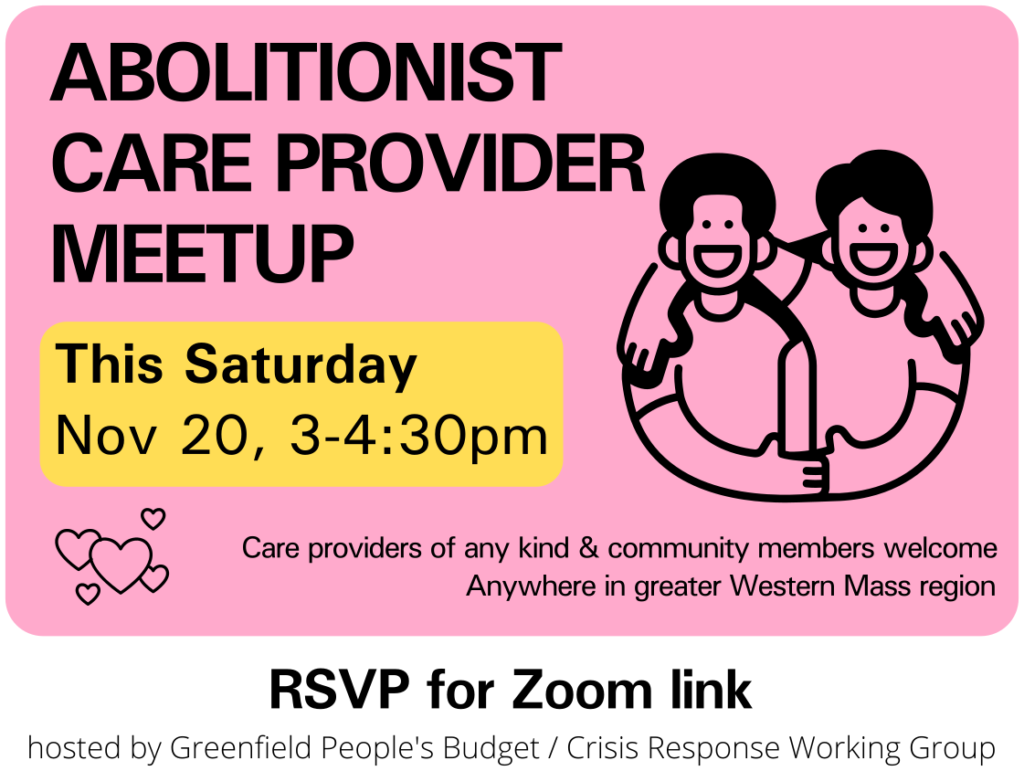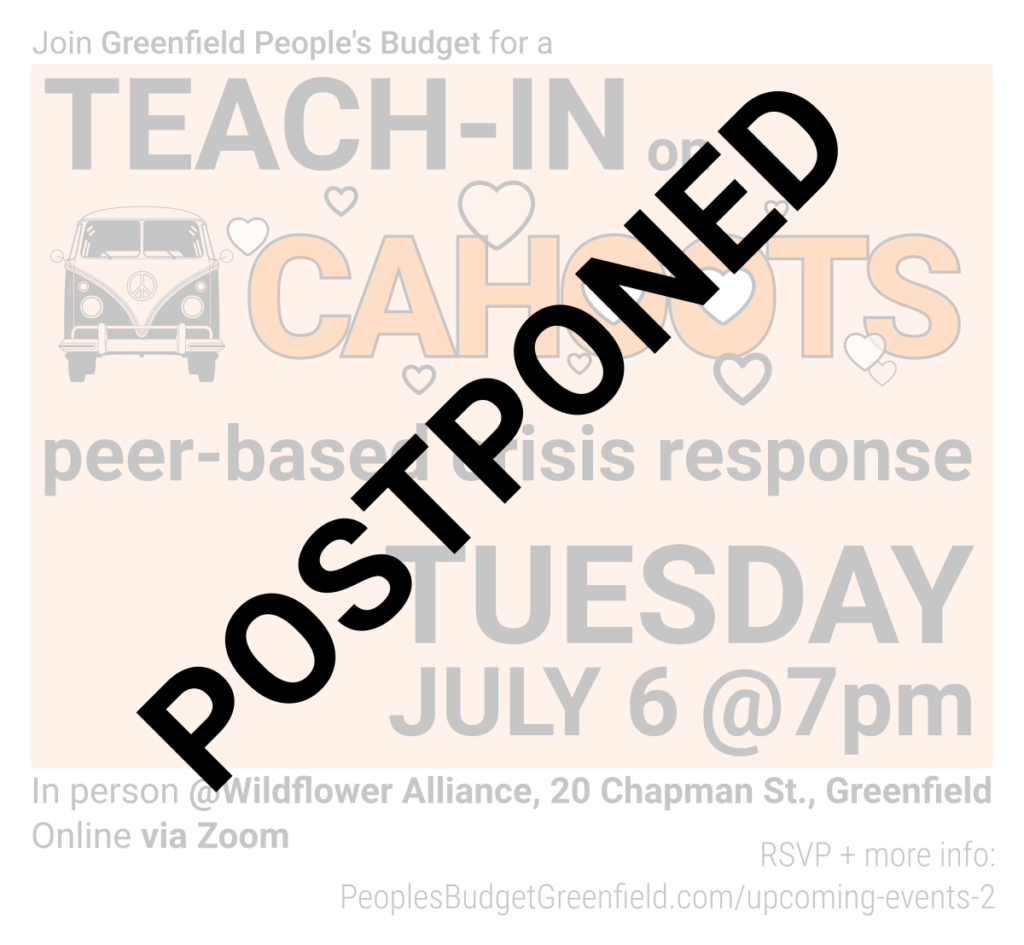The Greenfield mayor’s 2023 capital budget once again includes $1.9 million for police station upgrades. The plan is more detailed this time but still includes questionable, expensive items, at a time when existing commitments like the fire station are running well over their budget (projected $5 million overrun–expect to hear requests for donations to make up the shortfall). See below for more information on the police station upgrades.
Please let your councilors know what your priorities are. We suggest:
- Rein in excessive spending on the police station. Take care of needs, but no spending on luxury items. Reduce the allocation for these upgrades.
- Prioritize instead urgent needs like building affordable housing; repairing ailing town buildings such as the Sanderson Street complex and various schools; and environmental cleanup at the Lunt property, which affects our neighbors staying in the residential detox facility on-site as well as neighboring homes.
The Ways & Means Committee meets April 7 (6pm) to discuss the entire capital budget, but there’s no time for public comment–email or call councilors on W&M before the meeting. The full council will vote to approve, amend, or deny capital budget line items at their April 20 meeting (normally 6:30pm, check closer to the date in case they start early). Join the meeting to share your public comment.
Details & back story
After public outcry last year, the City Council voted down a vague proposal to spend $5 million over 3 years to upgrade the Greenfield police station. The mayor’s budget this year includes $1.9 million for the same upgrades.
The mayor and GPD have a preliminary plan for the upgrades written by Pacheco-Ross, the architects hired to build the fire station. Interested residents can view the plan here online. We appreciate the detail provided in this plan and discussion of the known problems with moisture incursion. However, the basic repairs and reconfigurations of the structure make up only a small part of the proposal costs.
The basic repairs proposed are 1) providing dispatch operators enough space to work comfortably by moving a wall and expanding the dispatch room; 2) fixing moisture incursion from the up-hill side of the building. Together these make up only $290k of the proposal.
Most of the $1.9 million estimated cost comes from two questionable items:
1) Replacing the sally port, estimated cost $980k. A large part of the plan (almost $1m) involves replacing the sally port, which is the garage and entrance to the station where arrested individuals are taken into custody. The current sally port is a metal shed, and the police are storing some evidence there. The Chief has primarily complained that it has a leaky roof and cannot protect evidence from the weather.
As councilors pointed out, this is a very large proposed expense. According to Councilor Desorgher’s research, the New Bedford police department–a much larger department than Greenfield’s–just built a new sally port for $500k last year, almost half the cost of the proposed GPD sally port. Even last spring, the Chief’s estimate for a new sally port was only $290k. But the proposed new sally port is not just a sally port: it is three bays instead of just one, and two of those are “wash bays” for washing police cruisers. Additionally, this carwash + sally port will be built out of brick.
Our questions:
- Why does the GPD need its own car wash, when it is mere steps away from a public car wash on High St.?
- Why does the sally port need to be built out of brick when other materials are much less expensive, and the police station is probably going to be replaced in the not too distant future?
- Why does evidence need to be stored inside the sally port, necessitating a larger and more substantial structure? A much more economical storage option which many businesses use is a shipping container–easy to secure, easy to protect from the weather.
2) Repaving and reconfiguring the parking lot, estimated cost $700k. There are two operational/safety concerns mentioned as justification for reconfiguring the parking lot: first, that the current exit onto High St. has poor visibility and should be made safer; and second, that currently there is no separation between police cruiser traffic and the general public traffic in the parking lot. The spending proposal includes milling, repaving, and repainting lines for a new configuration, with some regrading of the exit onto High St. But the plan also includes significant curb creation and landscaping (trees and bushes). How much of a budgetary priority is it to tear up existing asphalt to plant trees in this lot, when our town has other urgent needs?
The school district has requested a mere $250k total to repave the lot at Federal Street School, which is about half the size of the GPD lot. Paving work is quoted on a per-square-foot basis. As a town, do we want to spend an extra $200k of our borrowing on making a parking lot fancy, rather than just functional?
What’s missing in this proposal?
Future costs. The membrane roof on the police station was installed in 2009 and is approaching end of life. Chief Haigh has commented repeatedly on water incursion from the roof, but there is no line in this proposal for roof repair or replacement in this plan. We can expect that additional expense to be coming soon, and we should be budgeting for it now.
The police station is an old building, and we should not throw good money after bad. The consensus has been that the police station building is old and far from ideal for its purpose. Because plans for the new public safety complex fell through, GPD has proposed a number of renovations and repairs in order to get more use out of the building, as well as to make it safer and more usable for the public and for the people who work in it. As we said last year, we agree that we should maintain town property, and we should definitely make sure town employees have safe and healthy work environments.
We disagree that we should spend our town’s limited funds on expensive upgrades, especially to a building which will have to be replaced in the not-too-distant future. The fire station is running well over its projected budget, and the town is likely going to ask residents for donations to fund that construction. We have to clean up the Lunt complex, also, which is a health hazard for people in the residential detox facility as well as residents in the surrounding neighborhood. Other town buildings are in dire need of repair, have been left languishing for years, and are creating unhealthy conditions for town employees and our children.
Everyone deserves a healthy building. Let’s share the money around so that everyone can benefit. This is not a time for checking items off a wishlist when simple, affordable options will do just fine. Please let your councilors know what your priorities are. See the beginning of this post for talking points.
UPDATE: Former GPD officer Patrick Buchanan’s discrimination lawsuit against Greenfield and the GPD has officially started court proceedings. How much are Greenfield taxpayers going to have to pay because of the department’s repeated discrimination and retaliation against their only Black officer? Yet another reason not to throw more money at the GPD.




